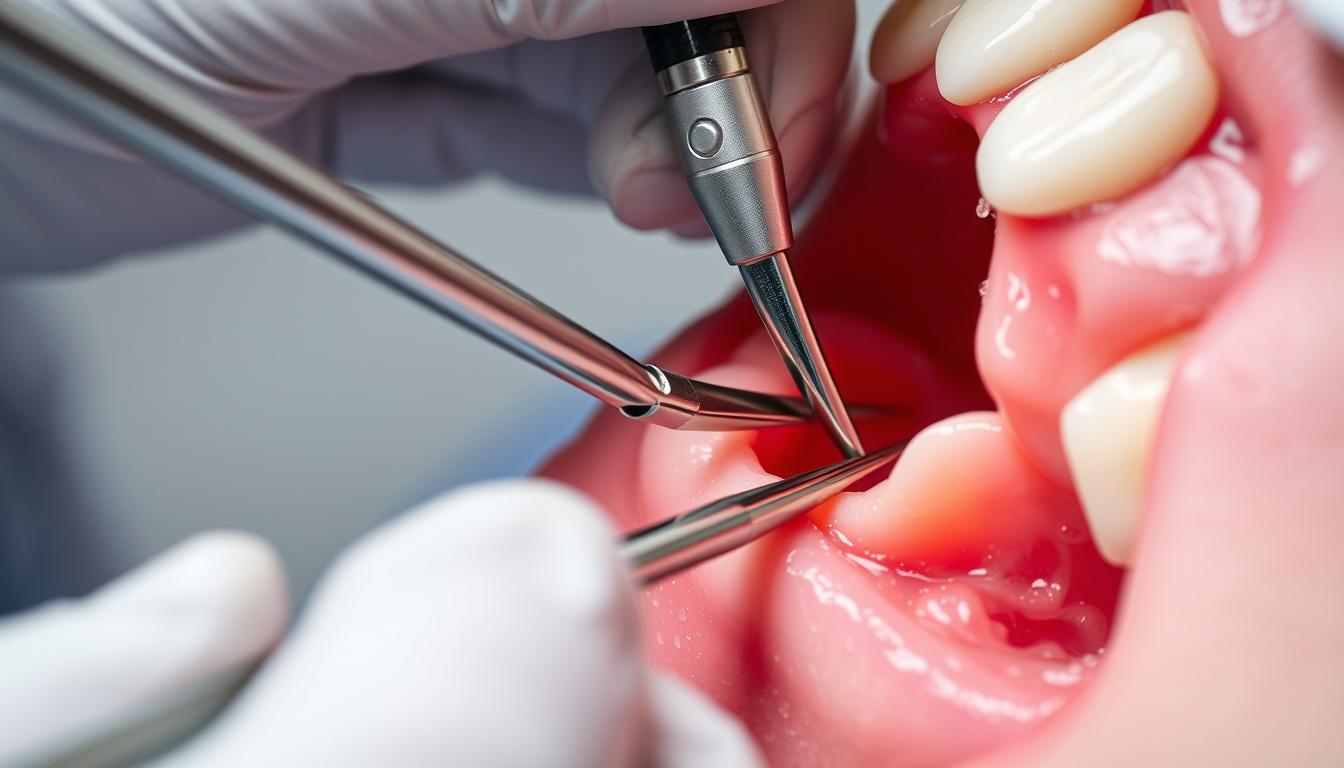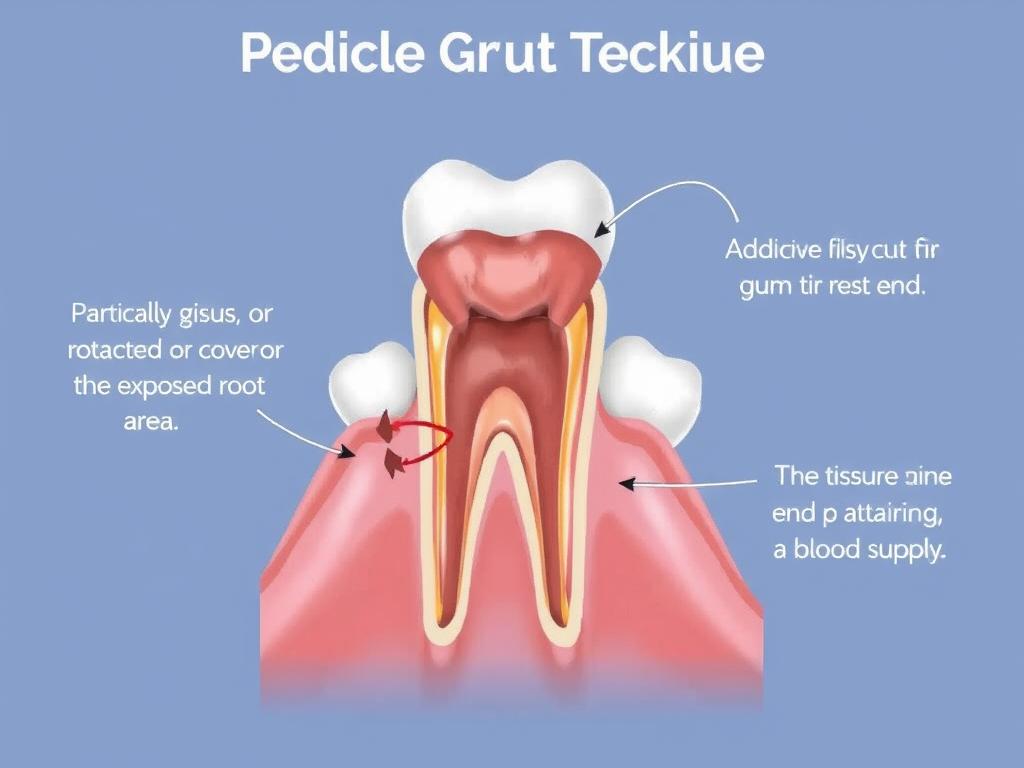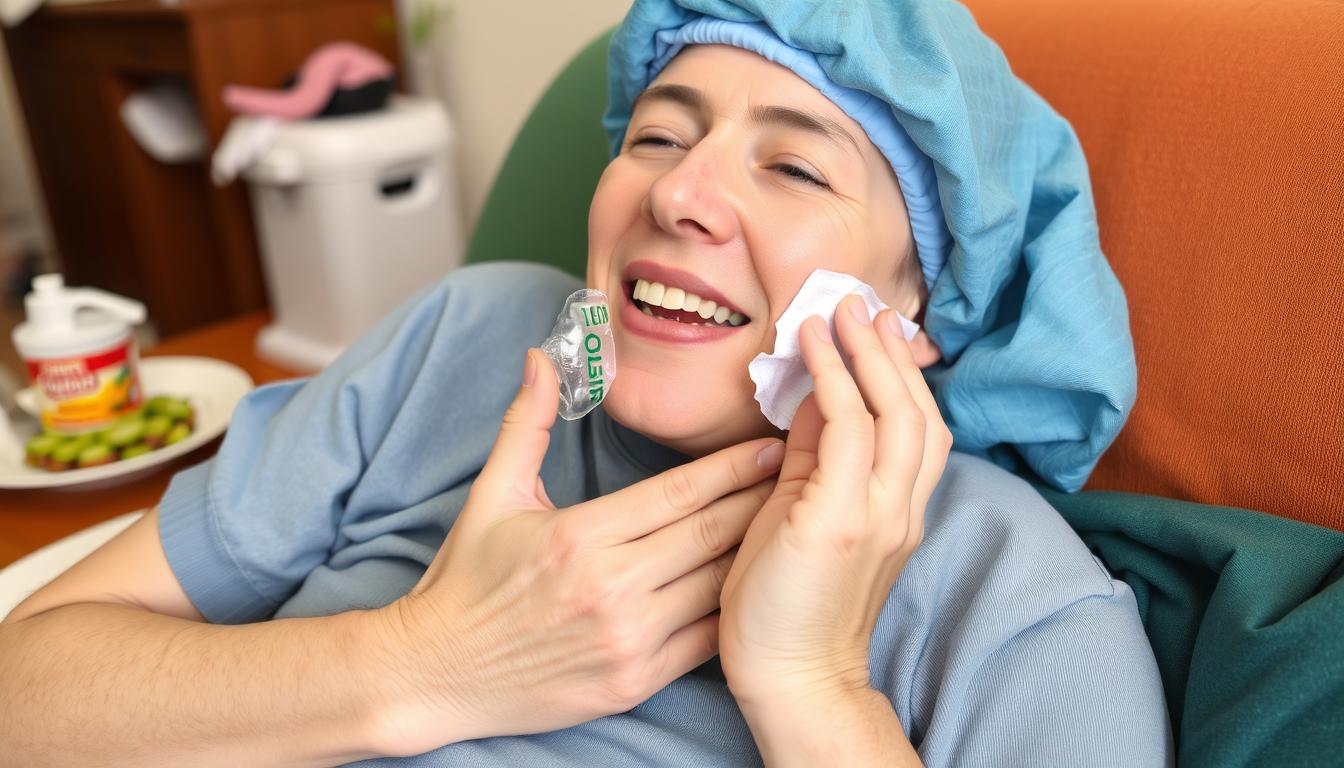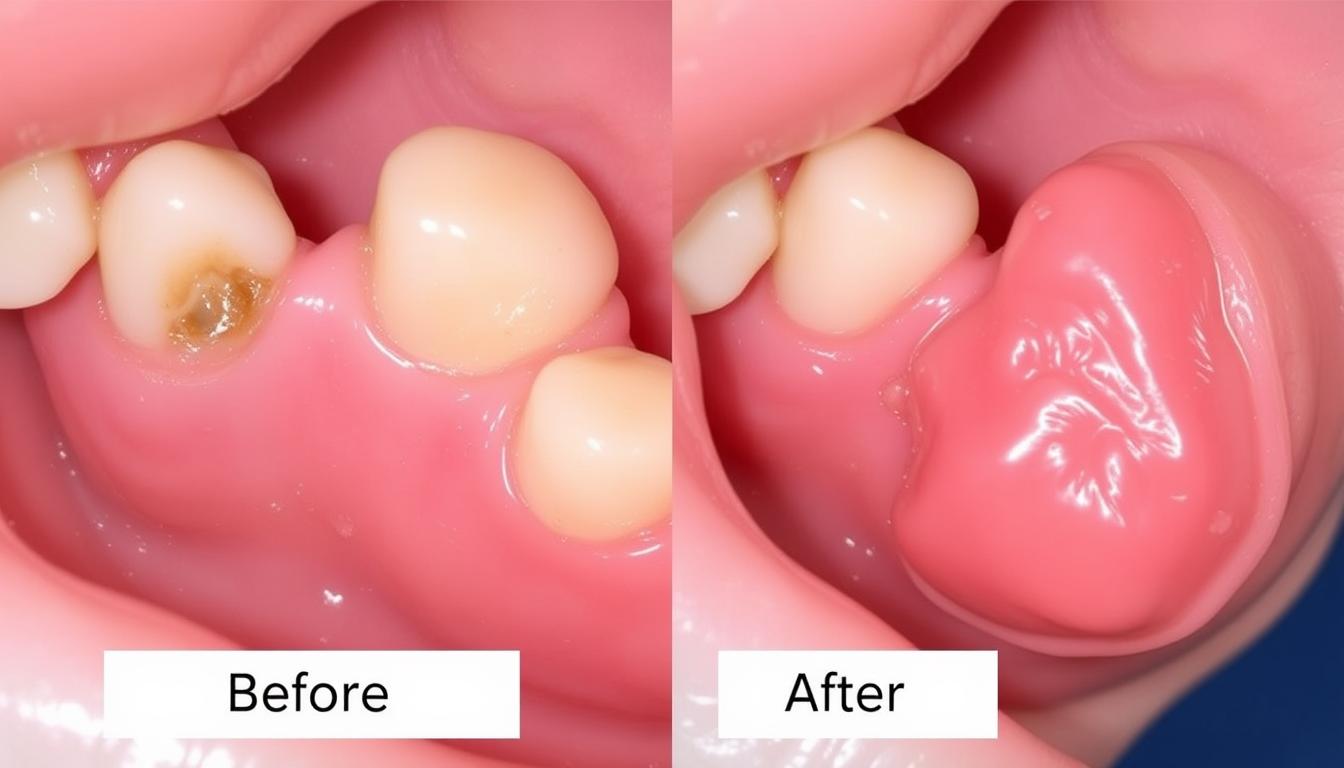Have you noticed your teeth looking longer than before, or experienced increased sensitivity to hot or cold foods? These could be signs of receding gums, a common dental condition that affects many adults. Gum grafting is a specialized dental procedure designed to address this issue by replacing lost gum tissue, protecting exposed tooth roots, and improving both oral health and smile aesthetics.
This comprehensive guide explores everything you need to know about gum grafting surgery, from understanding the different types of procedures to recovery expectations and how to choose the right specialist for your needs.Gum disease treatment
What is Gum Grafting?

Gum grafting (also called gingival grafting) is a type of dental surgery that treats gum recession, a condition where your gums pull away from your teeth, exposing the sensitive tooth roots underneath. This exposure can lead to increased tooth sensitivity, decay, and even tooth loss if left untreated.
During a gum graft procedure, a periodontist (a dentist specializing in gum health) takes tissue from one area of your mouth—typically the roof of your mouth—or uses donor tissue, and attaches it to areas where your gums have receded. This added tissue creates a new, stable gum line that protects your teeth and improves the appearance of your smile.
Did You Know? According to a 2022 study published in the Journal of Periodontology, over 50% of adults worldwide experience some degree of gum recession by age 45, making gum grafting one of the most common periodontal procedures performed today.
Types of Gum Grafts
Periodontists use several different techniques for gum grafting, depending on your specific needs, the extent of recession, and the health of your existing gum tissue. Here are the three main types of gum grafts:
Connective Tissue Graft

This is the most common type of gum graft. The periodontist creates a small flap in the roof of your mouth (palate) and removes a layer of tissue from underneath the flap. This connective tissue is then stitched to the gum area around the exposed root. The flap on the roof of your mouth is then stitched back down.
Best for: Treating root exposure in areas with thin gums and when aesthetics are important.
Free Gingival Graft

In this procedure, tissue is taken directly from the top layer of the roof of your mouth (rather than creating a flap) and attached to the gum area being treated. This type of graft is used when you need to add thicker tissue to prevent further recession.
Best for: People with naturally thin gums who need additional tissue to strengthen the area and prevent future recession.
Pedicle (Lateral) Graft

Unlike the other types, a pedicle graft doesn’t take tissue from the palate. Instead, the periodontist uses tissue from the gum near the tooth needing treatment. A flap of this nearby gum tissue (called a pedicle) is partially cut away but remains attached at one end. The flap is then stretched over the exposed root and sewn into place.
Best for: Cases where there is plenty of healthy gum tissue adjacent to the receded area, offering excellent blood supply and high success rates.
In some cases, your periodontist might also use donated tissue (allograft) or synthetic materials instead of taking tissue from your own mouth. This eliminates the need for a second surgical site and can reduce discomfort during recovery.
Who Needs Gum Grafting?

Gum grafting may be recommended if you’re experiencing any of the following conditions:
Receding Gums
The most common reason for gum grafting is significant gum recession, which can be caused by:
- Periodontal disease – Bacterial infections that damage gum tissue and supporting bone
- Aggressive tooth brushing – Using too much force or a hard-bristled toothbrush
- Genetics – Some people naturally have thinner or more vulnerable gum tissue
- Tobacco use – Smoking or chewing tobacco increases risk of gum recession
- Hormonal changes – Particularly during pregnancy or menopause
- Grinding or clenching teeth – Creates excessive force on teeth and gums
Signs You Might Need a Gum Graft
- Tooth sensitivity – Especially to hot, cold, or sweet foods
- Teeth appearing longer – As gums recede, more of the tooth becomes visible
- Visible tooth roots – Roots have a different color and texture than tooth enamel
- Bleeding when brushing or flossing – Sign of gum inflammation
- Loose teeth – Advanced recession can affect tooth stability
- Cosmetic concerns – Uneven gum line affecting smile appearance
Even if you’re not currently experiencing symptoms, your dentist might recommend preventive gum grafting if they notice early signs of recession during a routine examination. Early intervention often leads to better outcomes and simpler procedures.
Concerned About Receding Gums?
If you’ve noticed any signs of gum recession or increased tooth sensitivity, it’s important to consult with a dental professional. Early intervention can prevent further damage and may require less extensive treatment.Schedule a Consultation
The Gum Grafting Procedure: Step by Step
Understanding what happens during gum graft surgery can help ease anxiety about the procedure. Here’s a detailed breakdown of what you can expect:
- Initial Consultation Your periodontist will examine your gums, measure the extent of recession, and discuss your treatment options. They’ll explain which type of graft is best suited for your specific case and answer any questions you may have.
- Preparation On the day of surgery, you won’t need to fast, but you should arrange for someone to drive you home afterward if you’ll be receiving sedation. Wear comfortable clothing and follow any pre-operative instructions provided by your periodontist.
- Anesthesia The procedure begins with the administration of local anesthesia to numb the areas involved in the surgery. Depending on your comfort level and the complexity of the procedure, your periodontist may also offer sedation options such as nitrous oxide (laughing gas) or oral sedation.
- Tissue Harvesting For connective tissue and free gingival grafts, the periodontist will remove tissue from the roof of your mouth. For a pedicle graft, they’ll create a flap from adjacent gum tissue. If using donor or synthetic material, this step is skipped.
- Graft Placement The harvested tissue is carefully positioned over the exposed tooth roots and secured with small sutures. The periodontist will ensure proper placement to achieve both functional and aesthetic goals.
- Closing the Donor Site If tissue was taken from your palate, this area will be sutured closed or covered with a protective dressing to promote healing.
- Final Steps Your periodontist will provide immediate post-operative instructions and may have you rinse with an antibacterial mouthwash before leaving. The entire procedure typically takes between 1-2 hours, depending on how many teeth require treatment.
“The procedure itself was much less intimidating than I expected. My periodontist explained each step as we went along, and with the local anesthesia, I felt pressure but no pain during the surgery.”
— Sarah, 42, gum graft patient
Recovery Timeline and Aftercare Tips

Recovery from gum graft surgery typically takes one to two weeks, though complete healing may take longer. Here’s what to expect during your recovery period:
First 24-48 Hours
- Expect some bleeding, which should subside within 24 hours
- Swelling typically peaks around day 2-3
- Take prescribed pain medications as directed
- Apply ice packs to the outside of your face (20 minutes on, 20 minutes off)
- Rest and avoid strenuous activities
First Week
- Continue taking medications as prescribed
- Avoid brushing or flossing the surgical area
- Use prescribed antimicrobial mouthwash
- Eat soft, cool foods (nothing hot, spicy, or crunchy)
- Avoid smoking or using tobacco products
- Attend your follow-up appointment (typically 7-10 days after surgery)
Second Week and Beyond
- Swelling and discomfort should significantly decrease
- Sutures may be removed if they haven’t dissolved
- Gradually return to normal oral hygiene routines as directed
- Begin incorporating more solid foods as comfort allows
- Continue avoiding tobacco products
- Full healing may take 4-8 weeks
Recommended Foods During Recovery
Best Foods
- Yogurt, pudding, and ice cream
- Smoothies and protein shakes
- Mashed potatoes and other soft vegetables
- Eggs (scrambled or soft-boiled)
- Pasta, noodles, and soft rice
- Cottage cheese and soft cheeses
- Applesauce and other fruit purees
Foods to Avoid
- Crunchy foods (chips, crackers, raw vegetables)
- Spicy foods that may irritate the surgical site
- Hot foods and beverages that could disrupt clotting
- Seeds and nuts that could get lodged in the surgical area
- Acidic foods and drinks that may cause discomfort
- Alcohol, which can interfere with healing and medications
“The first few days were the most challenging, but following my periodontist’s aftercare instructions made a huge difference. I stuck to soft foods like yogurt and mashed potatoes, and by the second week, I was feeling much better. The key is patience and being gentle with the surgical area.”
— Michael, 51, underwent gum grafting for three teeth
Important: Contact your periodontist immediately if you experience excessive bleeding, severe pain that doesn’t respond to medication, pus formation, or fever over 101°F (38.3°C), as these could indicate an infection or other complications.
Risks and Success Rates of Gum Grafting
Benefits of Gum Grafting
- Protects exposed tooth roots from decay
- Reduces tooth sensitivity
- Prevents further gum recession
- Improves smile aesthetics
- Strengthens gum tissue to resist future damage
- May prevent tooth loss in advanced cases
Potential Risks and Complications
- Infection at the donor or recipient site
- Bleeding or swelling beyond normal recovery
- Graft failure (tissue not properly integrating)
- Sensitivity at the donor site
- Aesthetic results not meeting expectations
- Recurrence of recession if underlying causes aren’t addressed
Success Rate: According to a 2023 study in the International Journal of Periodontics and Restorative Dentistry, gum grafting procedures have a success rate of approximately 85-90% when performed by experienced periodontists. Success rates are highest when patients carefully follow post-operative care instructions and address underlying causes of gum recession.

Factors that can influence the success of your gum graft include:
- Periodontist’s experience and skill – Choose a specialist with extensive experience in gum grafting procedures
- Your overall health – Conditions like diabetes or autoimmune disorders may affect healing
- Smoking status – Tobacco use significantly reduces success rates
- Oral hygiene practices – Maintaining good oral hygiene before and after surgery
- Following aftercare instructions – Adhering to all post-operative guidelines
- Addressing underlying causes – Correcting habits that contributed to recession
Want to Learn More About Preventing Gum Disease?
Understanding how to maintain healthy gums can help prevent recession and reduce the need for future grafting procedures.Learn About Gum Disease Prevention
How to Choose a Periodontist for Gum Grafting
Selecting the right specialist for your gum grafting procedure is crucial for achieving optimal results. Here are important factors to consider when choosing a periodontist:

Credentials and Experience
- Board certification in periodontology
- Years of experience performing gum grafts
- Advanced training in modern grafting techniques
- Membership in professional organizations
- Teaching positions or published research (a plus)
Practice Evaluation
- Before and after photos of previous patients
- Patient reviews and testimonials
- Modern, clean facility with up-to-date technology
- Comfort options offered (sedation, amenities)
- Clear explanation of costs and insurance
Personal Factors
- Communication style and willingness to answer questions
- Thorough explanation of procedure options
- Personalized treatment approach
- Comfort level during consultation
- Availability for follow-up care
Questions to Ask During Your Consultation
- How many gum grafting procedures have you performed?
- What type of graft do you recommend for my situation and why?
- What are my sedation options during the procedure?
- What can I expect during recovery?
- What is your success rate with gum grafting?
- How will you address the underlying cause of my gum recession?
- What are the total costs, and what does that include?
- Do you accept my insurance, and what is typically covered?
- What follow-up care will I need?
- Can I see before and after photos of similar cases?
Cost Considerations: A 2023 survey by the American Academy of Periodontology found that the average cost of gum grafting ranges from $600 to $1,200 per tooth, depending on the complexity of the case and geographic location. Many dental insurance plans cover a portion of the procedure when it’s deemed medically necessary rather than purely cosmetic.
Ready to Find a Qualified Periodontist?
Take the first step toward healthier gums by consulting with a specialist who can evaluate your specific needs.Find a Periodontist Near You
Frequently Asked Questions About Gum Grafting
Is gum grafting painful?
During the procedure, you’ll be under local anesthesia, so you shouldn’t feel pain. Some discomfort, swelling, and minor bleeding are normal during the recovery period, typically lasting 1-2 weeks. Your periodontist will prescribe pain medication to manage any discomfort. Many patients report that the procedure is less painful than they anticipated, with the donor site (roof of the mouth) often causing more discomfort than the graft site itself.
How long does a gum graft last?
When performed correctly and with proper aftercare, gum grafts can last a lifetime. However, this depends on addressing the underlying causes of your gum recession. If factors like aggressive brushing, periodontal disease, or teeth grinding aren’t corrected, you may experience recession in other areas. Regular dental check-ups and good oral hygiene practices are essential for maintaining your results long-term.
Are there alternatives to traditional gum grafting?
Yes, there are several alternatives depending on your specific case:
- Pinhole Surgical Technique – A minimally invasive procedure that doesn’t require donor tissue
- Alloderm or other tissue substitutes – Using donated or synthetic materials instead of your own tissue
- Platelet-rich fibrin (PRF) – Using your own blood products to enhance healing
- Guided tissue regeneration – Encouraging your body to naturally regenerate gum tissue
Not all alternatives are suitable for every case. Your periodontist can advise which options might work for your specific situation.
Will my dental insurance cover gum grafting?
Many dental insurance plans cover a portion of gum grafting procedures when they’re deemed medically necessary to protect tooth health, rather than purely cosmetic. Coverage typically ranges from 50-80% of the cost, up to your plan’s annual maximum. Before scheduling surgery, ask your periodontist’s office to submit a pre-treatment estimate to your insurance company. This will give you a clearer picture of your out-of-pocket expenses.
How can I prevent needing additional gum grafts in the future?
To maintain your results and prevent further recession:
- Use a soft-bristled toothbrush and gentle brushing technique
- Maintain excellent oral hygiene with regular brushing and flossing
- Address teeth grinding with a night guard if recommended
- Attend regular dental check-ups and cleanings
- Treat any signs of gum disease promptly
- Avoid tobacco products
- Consider orthodontic treatment if misaligned teeth are contributing to recession

Conclusion: Taking the Next Step Toward Healthier Gums
Gum grafting is a highly effective procedure for treating gum recession, protecting your teeth, and improving your smile’s appearance. With success rates of 85-90%, it offers a reliable solution for those suffering from exposed tooth roots, sensitivity, and cosmetic concerns related to receding gums.
While the procedure may seem intimidating at first, understanding the process, recovery expectations, and potential outcomes can help ease concerns. By choosing an experienced periodontist and following proper aftercare instructions, you can achieve excellent, long-lasting results.
If you’re noticing signs of gum recession or your dentist has recommended a gum graft, consider scheduling a consultation with a periodontist to discuss your options. Early intervention often leads to simpler procedures and better outcomes.


2 thoughts on “Gum Grafting: A Comprehensive Guide to Restoring Your Gum Health”